- Have Revised
Stimulation¶
This week we are going to talk about stimulation, more specifically electrical stimulation. This lecture provides a more contextual look at ES and its applications.
We want to use stimulation to achieve medical benefits
Below are some desirable properties of our stimulation devices:
- Safe
- Durable
- Efficient
- Cost-effective
TENS vs Implants¶
For clinical use, the most advanced systems for muscle stimulation (such as TENS devices) continue to face significant control and stimulation delivery challenges. Only a handful of devices have gained meaningful clinical acceptance to date.
TENS - is a method of pain relief that can help some people with long-term painful conditions. These can include arthritis, back pain, sports injuries etc. It is a small battery-operated device that has leads connected to electrodes which deliver small electrical impulses.
tDCS - Puts 4 electrodes on your head, for gamers which stimulates the pre-frontal cortex. It was not FDA approved.
Here is a block diagram of a neural implant system
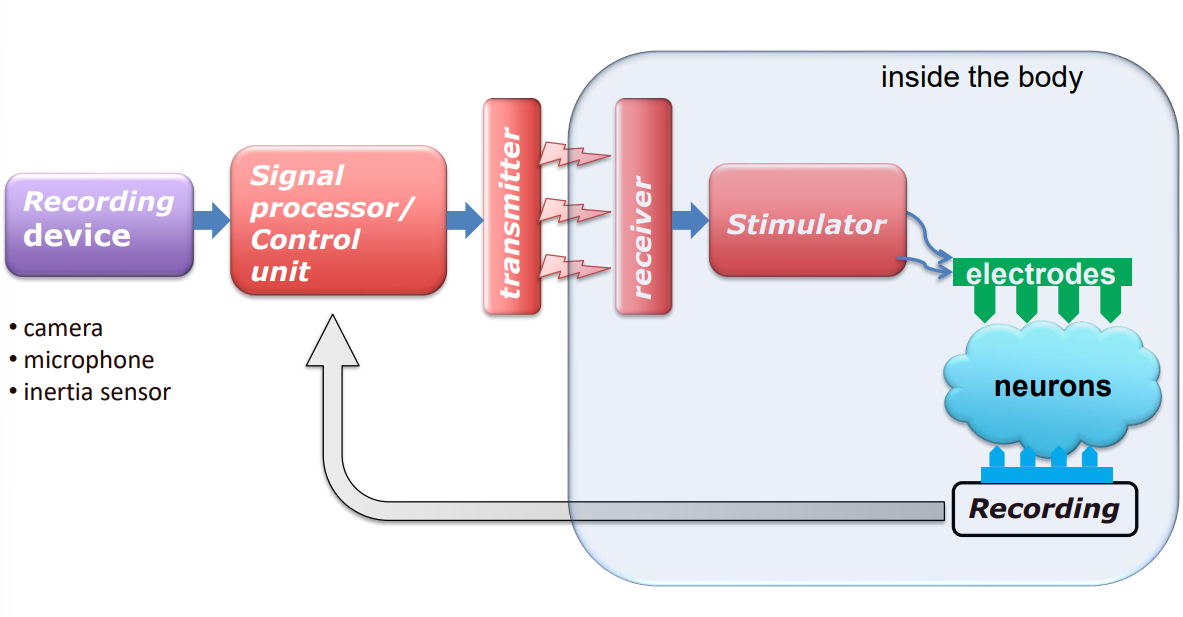
This is a device which looks to replace the functionality of something not working inside the body. In this case we have components inside and outside of the body.
Let’s have a look at the advantages and disadvantages of TENS vs Implants.
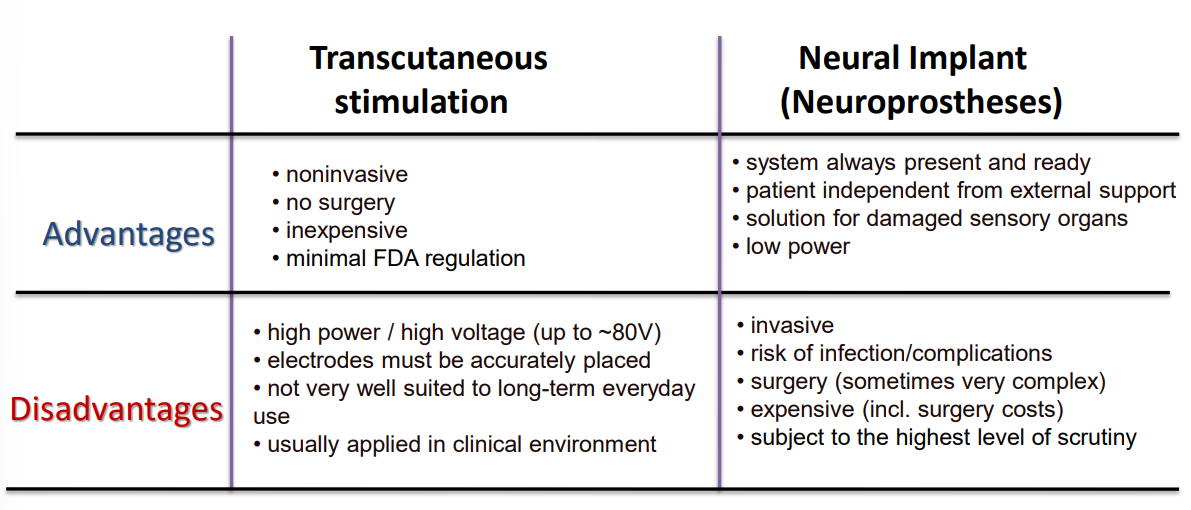
FES¶
FES is the use of electrical stimulation for the management of the disabilities, “Functional” implies that the electrical stimulation produces some health benefits.
More specifically IFESS, classifies the following as uses for electrical stimulation:
- Orthopaedic Disabilities:
- Pain Management After Injury Or Surgery
- Augmentation Of Wound And Bone Healing
- Management Of Stiffness And Joint Contractures After Immobilization
- Management Of Muscle Performance
- Management Of Idiopathic Spine Deformity
- Muscle Weakness Or Paralysis
- Idiopathic scoliosis
- Spinal Cord Injury (SCI)
- Cerebral Palsy
- Multiple Sclerosis
- Incontinence (urinary of fecal)
- Muscular Dystrophy
- Electrical Stimulation for Cardiac Assistance
- Electrical Stimulation for Chronic, Intractable Pain
The pacemaker is by far the most successful electrical stimulation implant
Neural Prosthetics¶
When ES is used to support every day activities such as standing, walking or hand use, it may be called a “neural prosthetic” application.
Neuroprostheses are devices which aim to substitute for the control of bodily functions which have been impaired by neurological damage.
SENSORY prostheses:
- auditory (cochlear implant)
- balance (vestibular)
- visual (retinal prosthesis)
- pain relief
MOTOR prosthetics:
- control of movement (leg, arm, hand)
- recording (e.g. brain implants)
- stimulation (direct muscle stimulation or nerve stimulation)
- bladder control implants
- control of movement (leg, arm, hand)
COGNITIVE prostheses:
- Deep Brain Stimulation (DBS)
- Vagus Nerve Stimulation (VNS)
Pacemakers¶
A medical device that produces electrical impulses which regulate the heart rhythm. It’s used when the heart’s natural beating rate is not adequate or there is a block in the heart’s conduction path.
Could have multiple electrodes, external control unit and can be combined with a defibrilator
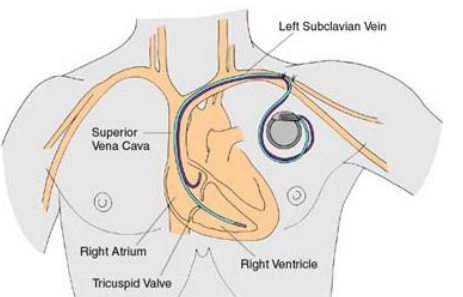
The heart acts as a simple mechanical pump. It’s giving you blood pressure which is vital. If the heart is not working as a pump there is no heart in the brain.
It’s imperative that the muscles within the heart work synchronously in order to work as a pump.
So how does the pacemaker work?
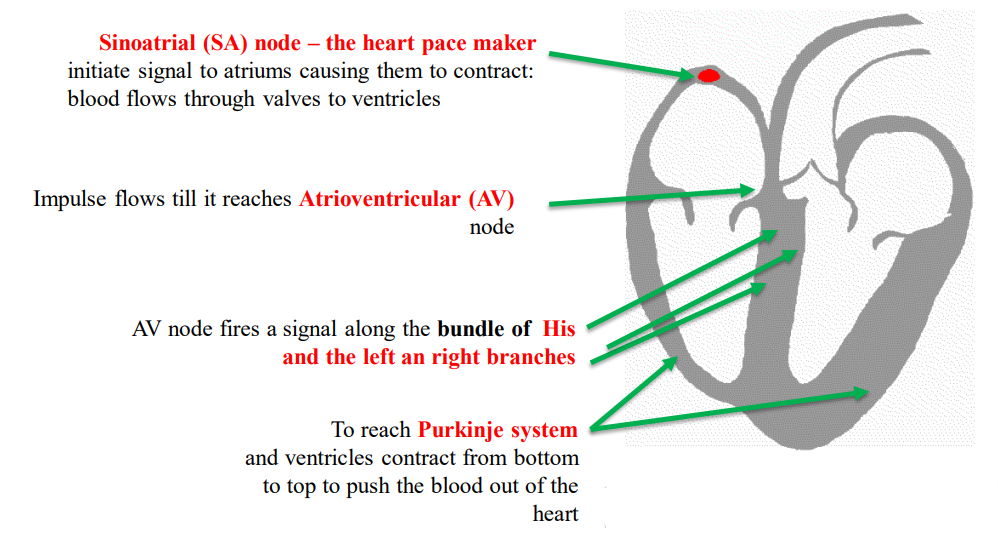
So the sinoatrial (SA) node, the pacemaker, is giving a rhythm of about 60-100 beats per second, it’s a cell excitable muscle cell, whose signal propagates throughout the heart.
Applications¶
Now we will look at some applications of electrical stimualtion
Medtronic Pacemaker¶
This is a very cutting edge device for pacemaker technology, it’s compact and lasts for a significant period of time. The only major downside is the fact majorly invasive surgery is required for it to be removed after it has been implanted.
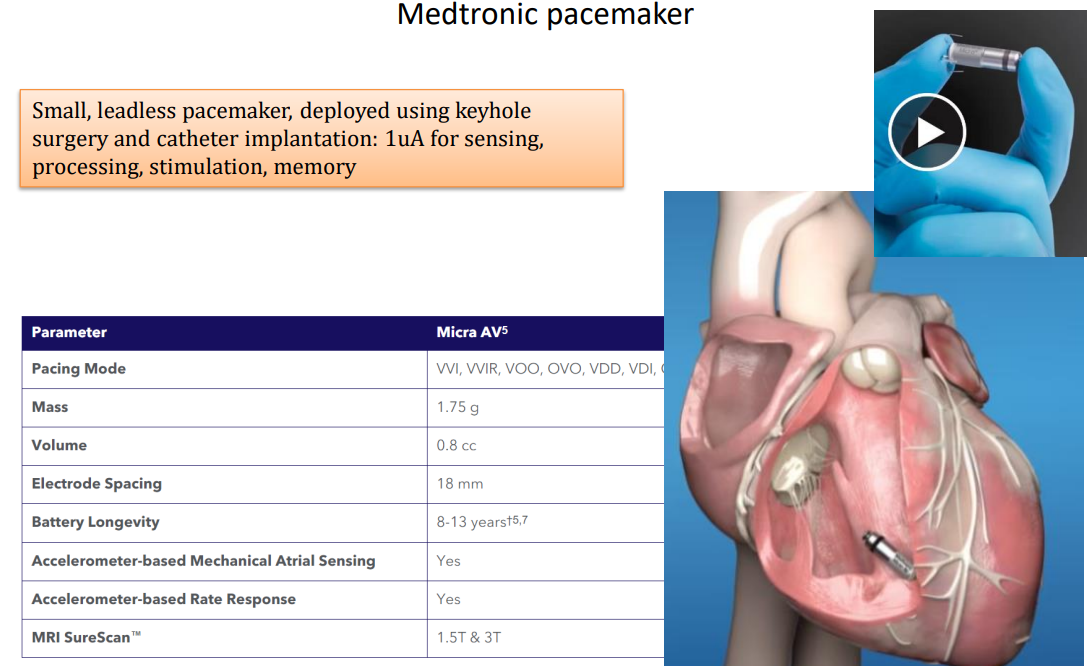
FES Applications¶
Generally applied to hand/arm or leg/foot movement, but can also be used for bladder control. For motor prosthesis, it particularly refers to stimulation of the direct muscle via the peripheral nerve and spinal cord.
The example below shows the kind of setup used for paralyses muscles in the hand.
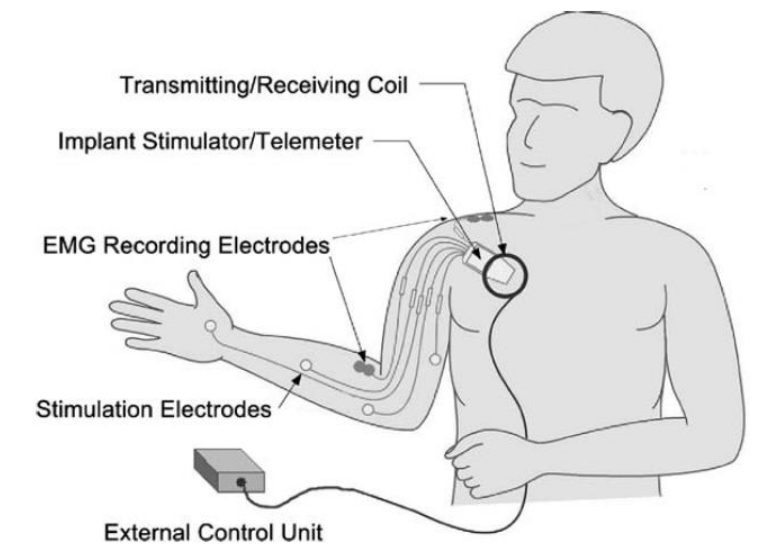
DBS¶
DBS in select brain regions has provided remarkable therapeutic benefits for otherwise treatment-resistant movement and affective disorders of the nervous system.
Consists of an electrode implanted into the thalamus, a structure deep in the brain, and connected by lead wire under the skin to a pulse generator implanted in the chest.
The generator must be replaced every three to five years, the life of the battery.
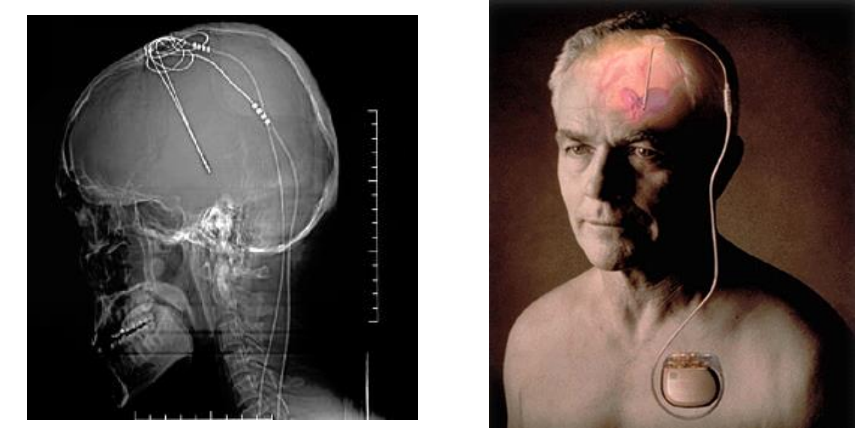
Vagus Nerve Stimulation¶
The vagus nerve stimulator power pack is implanted near the collarbone, and wired to the left side nerve -- always the left, since the right side goes directly to the heart.
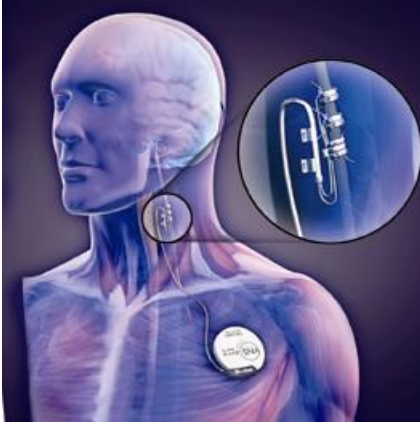
Used in the treatment of:
- untreatable epileptic seizures
- long-term, chronic depression
- severe depression
- obesity – appetite control
For each patient the intensity and frequency of the pulse and device settings is stored in individual memory cards slotted into a handheld computer linked to the wand.
TMS¶
- A method of activating motor cortex using high frequency magnetic field
- Non-invasive technique
- Rapidly changing magnetic field creates weak electrical currents in the brain
- These currents temporarily excite or inhibit cortical areas
- Therapeutic application: Repetitive TMS approved by the FDA in 2008 as a treatment for major depression
- Research: use in stroke patients and various neurological disorders such as Parkinson’s disease and epilepsy with promising results.
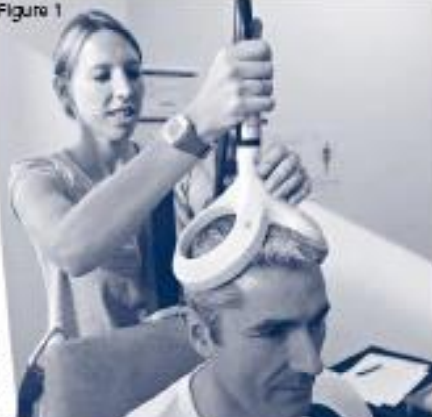
Difficulty Interfacing with the Neural System¶
Part of the problem why we have problems when interfacing with the neural system is due to the construct of a nerve.

We see here, within the epithelium layer are these fascicles which contain more fibres. So essentially these nerves can contain tens of these fascicles and inside these you can have hundreds of fibres.
The difficulty arises with having to interface with these fibres with so many of them around.
To interface with these we using electrodes.
Summary¶
Electrical Stimulations can be used in a number of medical applications where other methods or treatments are unsatisfactory or non-existent.
Stimulations can be applied either through the skin or using implanted devices (the circuits and systems for delivering the stimulus will be presented in the next lecture)
The cardiac pacemaker is one of the most successful devices, but the neuroprosthetic devices market (especially cochlear prosthesis) is rapidly expanding
Proper interfacing with both Central and Peripheral Nervous System is still a very challenging task due to complexity of neural circuits and the size of neurons and its parts.
General: as more technology firms produce wearables, apps and connected medical devices that claim to help people live better or treat diseases, we need to draw a line between digital wellness and digital medicine, i.e. truly therapeutic products.